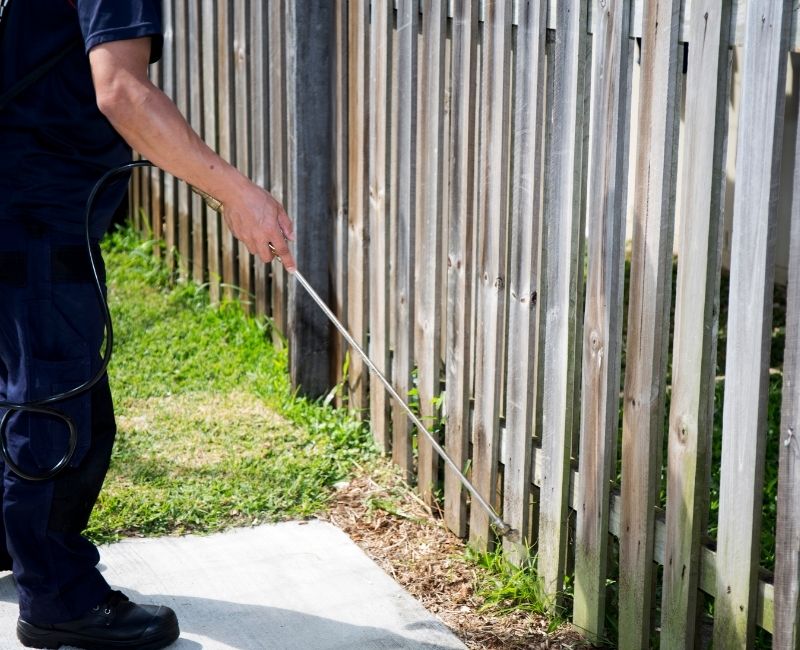Fleas – Identification, Behaviour and Treatment
Fleas are a common nuisance in households with pets. These tiny, blood-feeding parasites can quickly turn into a serious problem if left untreated.
Here on the Central Coast, the region’s warm and humid climate creates ideal conditions for fleas to thrive—especially during spring and summer. At Coastwide Pest Control, we’ve seen infestations of all sizes, from mild outbreaks to widespread infestations affecting every room in the home.
Despite their size, fleas cause significant discomfort for both pets and people. Bites often lead to itching, irritation, and sometimes allergic reactions. Because fleas reproduce rapidly and can survive in carpets, bedding, and lawns, early detection and prompt treatment are essential to prevent them from taking hold.
Enquire Now

What Are Fleas?
Fleas are small, wingless insects that feed on the blood of mammals—most commonly dogs and cats. Measuring just 2–3mm in length, they use their powerful legs to jump from host to host, making them difficult to detect and control without a thorough approach.
A single flea can lay up to 50 eggs per day, and those eggs don’t stay on your pet. They fall into carpets, furniture, floorboards, and lawns—anywhere your pet rests or moves through. This is what makes flea infestations so widespread and persistent.
This ability to spread quickly and quietly is what makes fleas so persistent. Once established, they often require more than just over-the-counter solutions to eliminate fully.
Fleas go through four life stages:
Egg → Larva → Pupa → Adult.
While adults live on animals, the other stages often develop unnoticed in the home environment.
Where Fleas Are Found
Fleas don’t just live on pets—they infest the spaces pets come into contact with Inside a home, they’re commonly found in:
- Pet bedding and blankets
- Carpeted areas, especially around edges and under furniture
- Upholstered couches and chairs
- Floorboard cracks and skirting boards
- Between tiles or timber joins in warm spots
Outdoors, fleas breed in moist, shaded areas such as:
- Under decks or verandahs
- Garden beds and mulch
- Leaf litter and lawn clippings
- Leaf litter and lawn clippings

What makes them particularly difficult to manage is how quickly they spread. Eggs fall from pets as they move through the home, landing wherever they sit, sleep, or walk. These eggs hatch into larvae, which burrow into soft surfaces or crevices—places that are often missed in general cleaning.
While fleas prefer warm, humid conditions, they can survive indoors all year round—especially in coastal regions. On the Central Coast, we regularly see infestations in homes that appear clean and well-maintained. If pets aren’t on an active flea treatment, fleas can settle in and multiply fast.
Signs of a Flea Infestation
Fleas are small, fast, and often go unnoticed until the infestation is well established. Spotting the signs early is key to controlling the problem before it spreads.
Left untreated, flea populations can explode within weeks. Eggs and larvae develop in hidden areas, making the infestation harder to eliminate with surface-level cleaning alone.

Why Fleas Are a Problem?
Fleas are more than just a nuisance—they can cause ongoing health issues for both pets and people.
For Pets
For Humans
Beyond physical discomfort, flea infestations are stressful and time-consuming to manage without the right approach. Once embedded in the home, they’re unlikely to disappear on their own.
Flea Season on the Central Coast
Fleas are most active during the warmer months of the year, particularly in spring and summer. They thrive in temperatures between 20–30°C and prefer environments with high humidity.
The Central Coast’s climate provides ideal conditions for fleas to breed rapidly—indoors and outdoors. During peak season, infestations can establish and spread quickly, especially in homes with untreated pets or neglected outdoor areas.
Even though activity slows during cooler months, fleas can survive year-round inside homes where conditions remain warm and sheltered.


How to Prepare for Flea Treatment
A successful flea treatment depends on proper preparation. Treating only the pets or the floors isn’t enough—fleas must be targeted at every stage of their life cycle. Here’s what to do before professional treatment begins:
- + Mow the lawn the day before or morning of treatment. Bag the clippings and dispose of them in the bin—don’t leave them on the ground.
- + Vacuum all floors thoroughly, with extra attention to carpet edges, corners, and under furniture.
- + Immediately seal and bin the vacuum contents to prevent eggs or larvae from re-entering the environment.
- + Wash all pet bedding and soft furnishings in hot water and dry them on a high heat setting.
- + Treat all pets with a vet-approved flea control product on the same day as the home treatment.
Skipping any of these steps can reduce the effectiveness of the treatment and allow the flea life cycle to continue.
Treatment and Prevention of Fleas
Effective flea control requires a combination of professional treatment and consistent prevention. Fleas won’t be eliminated by surface sprays alone—every stage of their lifecycle must be disrupted.
How Flea Treatment Works
Professional treatment targets both adult fleas and their developing stages:
- A residual insecticide is applied to carpets, flooring, and pet resting areas to kill adult fleas on contact.
- A larvicide is used to break the cycle by preventing eggs and larvae from developing into biting adults.
- Outdoor areas, such as lawns, decks, and pet kennels, are also treated if required.
It’s common to see flea activity continue for several days after treatment. This is due to existing pupae hatching and being exposed to the residual product. Vacuuming daily for the first 7–10 days helps bring these fleas into contact with treated surfaces and speeds up the process.
Ongoing Prevention Tips
Once treatment is complete, keeping fleas out means staying proactive:
- Continue regular flea treatments for all pets, even during cooler months.
- Vacuum weekly, especially in pet areas and around floor edges.
- Wash pet bedding regularly in hot water and dry it completely.
Keep lawns short and remove leaf litter or garden debris where fleas might hide. - Limit contact with untreated animals, especially if visiting parks, kennels, or other homes.
Without prevention, fleas can re-establish quickly—especially during peak season.
NEED HELP WITH FLEAS?
If you’re dealing with a flea infestation, professional treatment is the most effective way to break the cycle and get lasting relief.
Coastwide Pest Control provides safe, targeted flea treatments for homes across the Central Coast. Our licensed technicians use proven products to eliminate fleas at every stage—from eggs to adults—while keeping your household safe.
